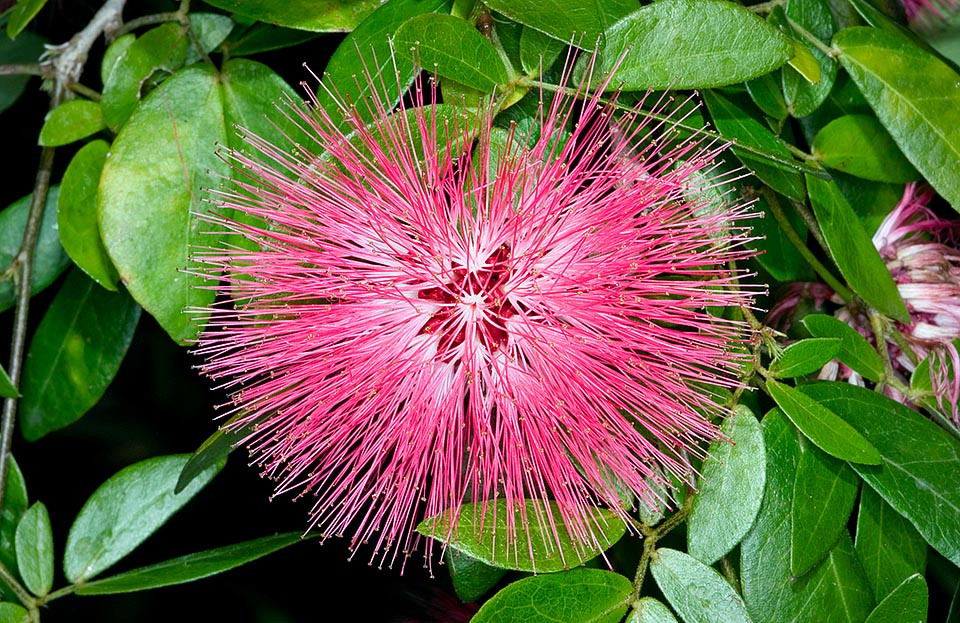Family : Fabaceae

Text © Pietro Puccio

English translation by Mario Beltramini
The plant is native to Colombia and Venezuela, where it grows in the semi-desert coastal slopes at low altitudes.
The name of the genus is the combination of the Greek words “kàllos” = beauty, and “anér, andrós” = man, male, with reference to the showy stamina; the Latin name of the species “falcata” = falcate, sickle-shaped, refers to the shape of the leaflets.
Common names: cimbra-potro, clavellina, clavellino amarillo (Spanish-Venezuela).
The Calliandra falcata Benth. (1844) is a shrub or 3-6m tall small tree with bipinnate leaves with three pairs of falcate, semi-ovate leaflets, of a bright green colour on the upper page, yellowish green below, of increasing dimensions, the extreme ones being 4-6 cm long and 2 cm broad; the new leaves are pendulous and have a reddish colour.
The flower heads (inflorescences formed by a crowd of flowers without peduncle and strictly close each other), are solitary, globular, of about 8 cm of diameter, on a short pubescent peduncle, formed by about 15 sessile flowers with tubular, white and one centimetre long, corolla and 15-20 protruding stamina, about 3,5 cm long, of red colour on the upper half.

In Colombia and Venezuela, the Calliandra falcata can be 3 to 6 m tall with 8 cm pyrotechnical inflorescences. The sickle-shaped leaves evoke the scientific name © G. Mazza
The fruit is a 6-8 cm long and 1-2 cm broad, pod containing 3-4 elliptic, flat, 7-8 mm long and 4-6 mm broad, pale brown, seeds. It reproduces by seed, on a sandy substratum and rich of humus at the temperature of 20-22 °C, and by cutting.
Much ornamental plant, but little cultivated, suitable for tropical and subtropical climates, its cultivation may be tried, in a sheltered position, in the warm temperate ones, as it can resist, for a short time, to temperatures as low as -2 °C.
It is not particular about the soil, provided the same is very draining; the best exposure is in full sun, even if it adapts to a slight shade, but with a less abundant flowering.
The watering must be abundant in summer, practically stopped in winter in the rainy climates.
Synonyms: Feuilleea falcata Kuntze (1891); Calliandra fulgens Hook.f. (1898); Calliandra serjanioides Urb. (1900); Calliandra amblyphylla Harms. (1921).
→ To appreciate the biodiversity within the family of FABACEAE please click here.
